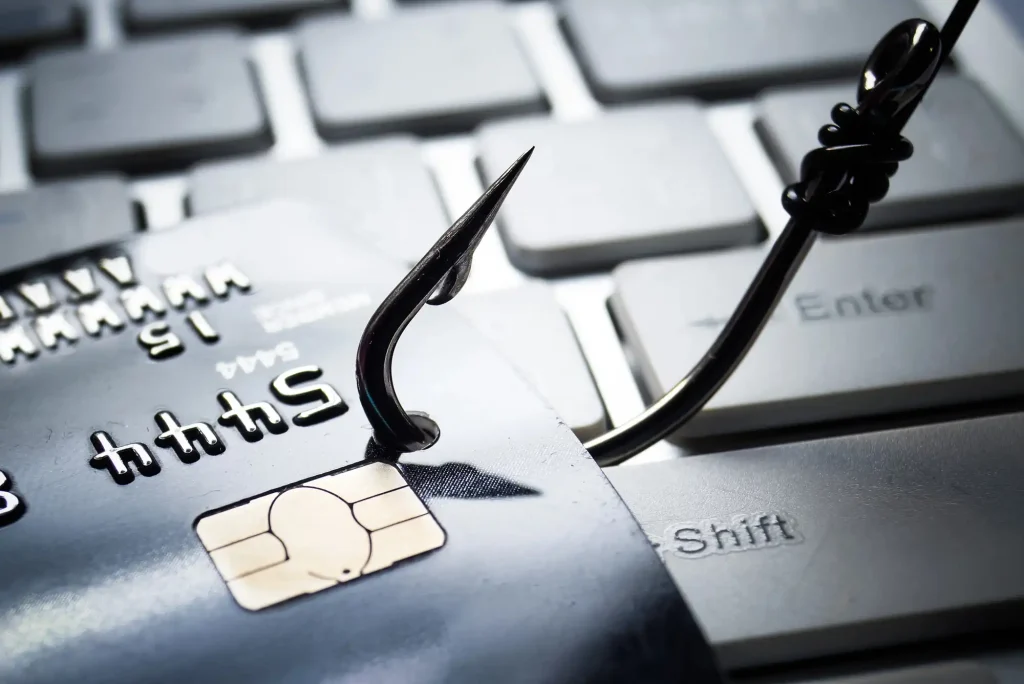Nowadays, more and more people are using social media, which also makes it a tasty morsel for scammers. Phishing is a dangerous game in which criminals impersonate friends or well-known companies to scam us out of personal information or money. How to recognize fake messages and links to effectively defend against them? Don’t get caught in the trap!
Table of Contents:
What is/what is phishing?
Phishing is a scam that aims to trick us out of our data, such as passwords, credit card numbers or other personal information. Scammers, known as “phishers,” often impersonate well-known companies or institutions, such as banks, social networks or websites, to gain our trust. They usually send fake emails, text messages or social media messages that look very believable.
In such messages, scammers may inform us of some problem with our account, say they need our help, or offer something that seems attractive, such as a reward or discount. These messages often contain links that lead to fake websites that look identical to the ones we regularly use. After clicking on such a link, we are taken to a page where we have to enter our data.
An example of phishing might look like this: you get an email from “your bank” telling you that your account has been blocked and you need to quickly click on the link provided to unblock it. In fact, it is the scammers who are trying to get your data to steal your money.

Phishing is a very insidious type of scam, because we are often not able to immediately notice that something is wrong. That’s why it’s important to be cautious and always check that the message you receive is actually from the person or company who sent it. It is important never to give out your personal information in response to messages that seem suspicious.
Major phishing threats
Phishing carries many risks that can have serious consequences for our privacy and security. The biggest threat from phishing is the theft of our personal information. Fraudsters can get our passwords, credit card numbers or bank account login information. Once they have this information, they can steal our money or take out loans in our names. This can lead to huge financial problems and trouble with law enforcement.
Once scammers get their hands on our login information, they can take control of our social media, email or bank accounts. This means they can send fake messages in our name, change our passwords and even steal information from our accounts. Losing access to important accounts can be frustrating and stressful.

Phishing is not always just about phishing. Sometimes scammers can send links to malware. After clicking on such a link, viruses can infect our device, stealing data or destroying files. This can lead to additional costs to repair your computer or smartphone.
If someone takes over our social media accounts, they may start posting offensive or false content on our behalf. This can damage our reputation among friends or co-workers. People who get such messages may think that we are the ones sending them, leading to misunderstandings and loss of trust. After all, phishing can lead to direct financial loss. Once bank details have been stolen, fraudsters can quickly make transfers or purchases without our permission. In such situations, it is sometimes difficult to recover lost money, and the claims process can be long and stressful.
How not to get caught by fake news and links?
Phishing is a serious threat, but there are ways to defend against it. Here are some simple steps to help you avoid fake messages and links.
Watch out for suspicious messages
Always be vigilant when you receive messages from unknown people. If someone asks you for personal information or to click on a link, think about whether it’s definitely safe. If something seems strange, it’s better not to open it.
Check email addresses
Scammers often pretend to be real companies, but their e-mail addresses may look different. Before you do anything, make sure the email address is consistent with what the company usually uses. For example, if you get a message from an account that ends in “@gmail.com” and not the company’s website, it could be a scam.
Don’t click on the links
If you get a link in a message, it is better not to click it. Instead, open your browser and type in the address of the site you are looking for. This will avoid the risk of ending up on a fake site.
Use strong passwords
Make sure your passwords are hard to guess. Use a combination of letters, numbers and special characters. It’s also a good idea to change passwords every so often. The more difficult the password, the harder it is for crooks to get to it.

Enable two-step verification
Many platforms offer two-step verification. This means thatin addition to your password, you have to confirm your identity in another way, such as by entering a code you get on your phone. This is an extra layer of protection.
Be careful on public Wi-Fi networks
When using public Wi-Fi, avoid logging into important accounts such as banks. Scammers can easily intercept your data in such places. It’s better to use your mobile internet if you need to get something done.
Educate yourself…
The more you know about phishing, the easier it is to recognize it. Read articles, watch videos or attend training courses that teach you how to protect yourself from scammers.
Remember that the most important thing is to be careful. With these simple steps, you can minimize your risk and not get caught by fake news and links. Protect your data, and then you will be much safer on the Internet.





